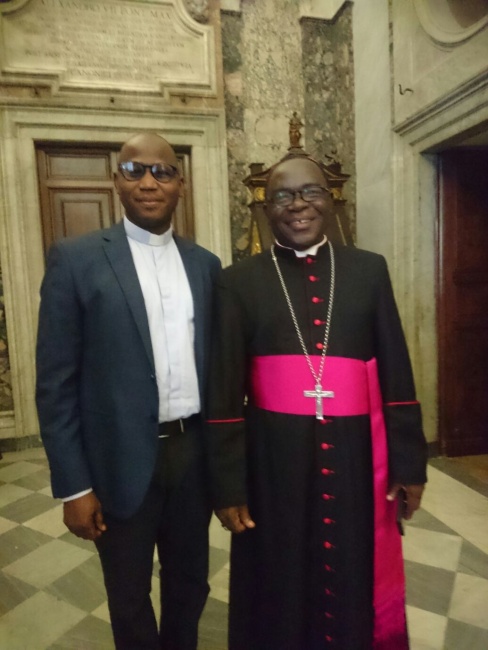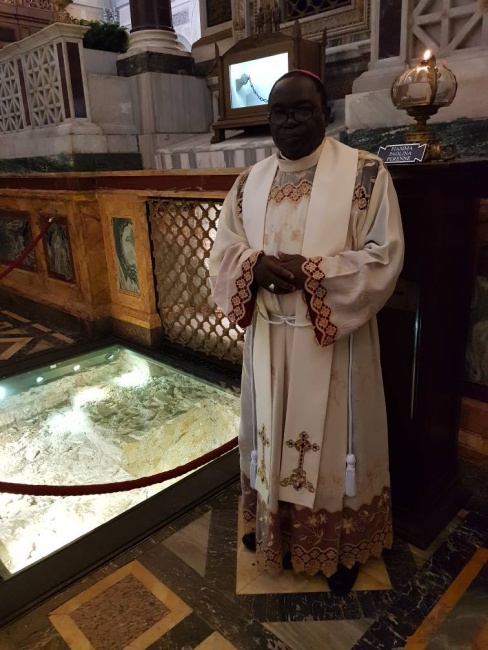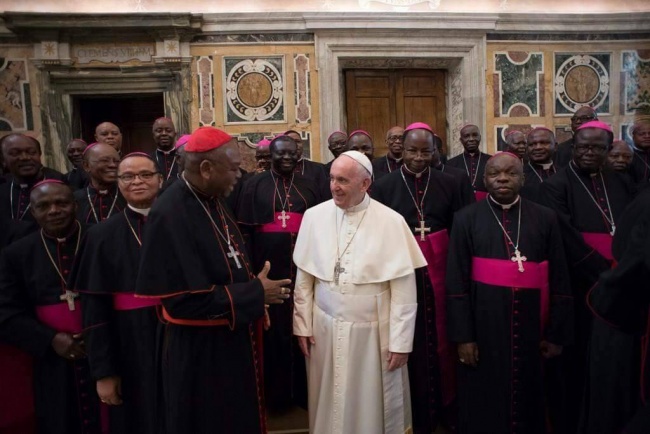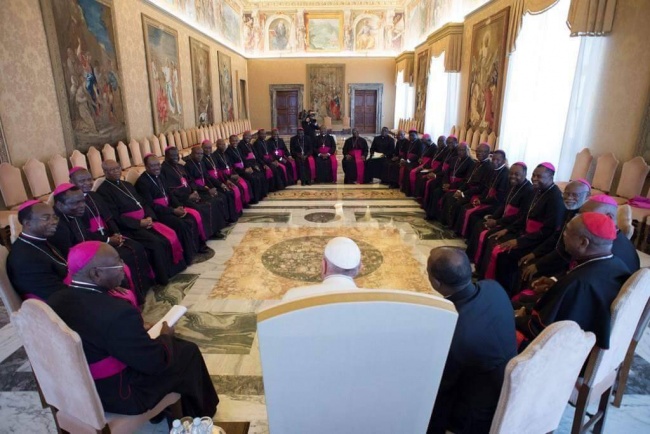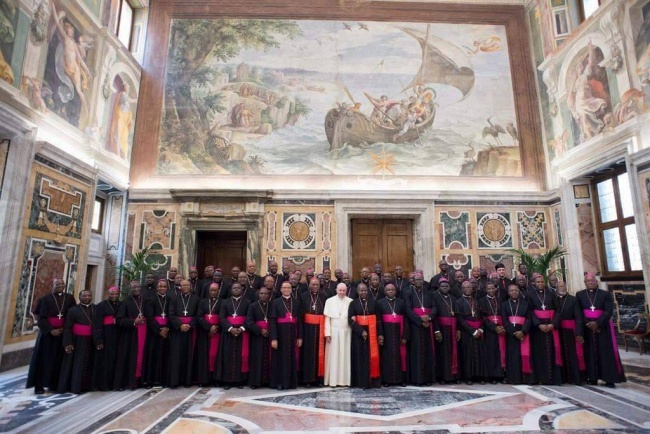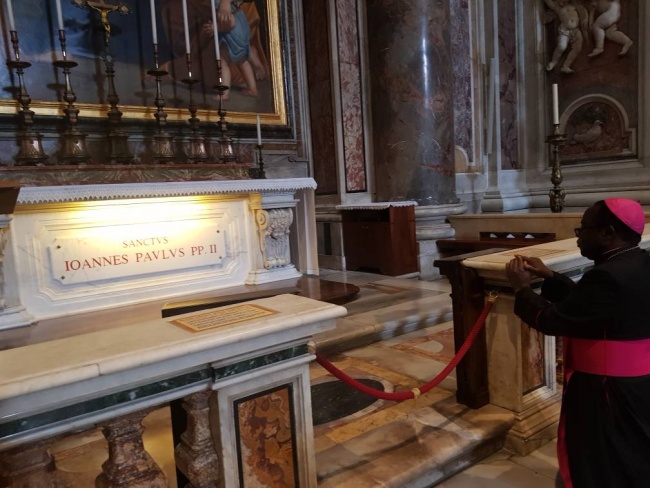The bishop of a diocese is required to make this visit every five years, as a sign of his communion with the Holy See and in order to report on the condition of his diocese.
The bishop is expected to provide an in-depth report on his diocese.
If some grave reason prevents him from making the ad limina visit, the bishop may send a coadjutor or another official delegate.
During the ad limina visit, the bishop is required to do the following:
1. Visit the tombs of Sts. Peter and Paul. This visit is recorded in writing.
2. Visit with the pope. This visit includes three elements:
– The bishop makes a renewal of his pledge of dedication to the Holy See.
– The bishop delivers a written report on the state of his diocese, which is presented to the Secretariat of State and the Congregation for Bishops.
– The pope addresses the bishop, offering his perspective on the challenges facing the church in that diocese.
Ordinarily, bishops make their ad limina visits in groups, with the bishops of a country or ecclesiastical province travelling to Rome and meeting with the pope together.
For smaller countries, the entire bishops’ conference might make the ad limina visit as a group, with auxiliary bishops accompanying their bishops.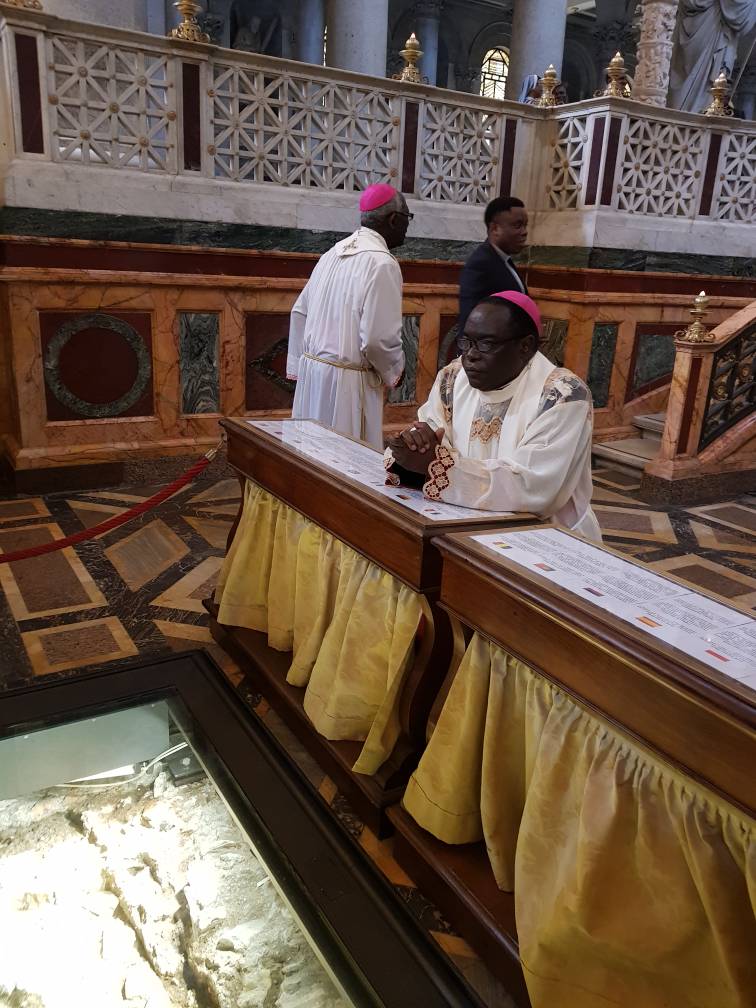
When there are many bishops in a country, they usually travel to Rome in smaller groups so that the entire episcopate from a given country might visit Rome over a period of several weeks or even months.


